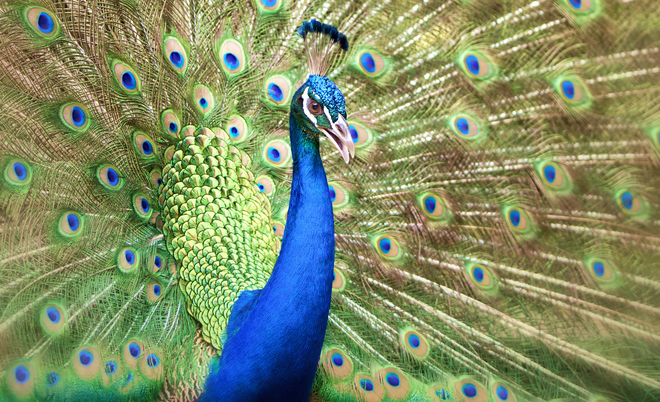
The southern Indian state of Goa has controversially reclassified India’s national bird, the peacock, as vermin, in a move that paves the way for a potential cull of the spectacular species.
The country’s most popular holiday destination has already ruffled feathers and shaken fronds this month by relegating its iconic coconut trees, from actual trees to mere palms, which means farmers can start lopping them down without having to go through any official procedures—a move that environmentalists claim has more to do with clearing land for lucrative real estate deals than getting rid of dead wood.
And it appears that the emblematic Indian peafowl might be next on the chopping block, with farmers again pushing the agenda. ‘These animals are creating a problem for farmers and are destroying their cultivation in rural areas,’ Goa’s agriculture minister, Ramesh Tawadkar told local reporters, according to the Press Trust of India.
The peacock is not in peril alone—several other animals have also been put on the naughty nuisance list, including wild boar, monkeys and wild bison—but it’s the threat to the famously colour-splattered species that’s causing the most uproar.
The Indian peafowl is a curious bird. Males boast an extraordinarily elaborate train comprised of kaleidoscopically patterned covert feathers that they fan out and quiver when attempting to attract a mate. This train, which is a huge hindrance in everyday life, has been a puzzle to behavioural biologists for centuries. Darwin struggled to fit it into his theory of natural selection, and eventually used another concept, sexual selection, to explain it.
Whatever caused the species to evolve in this direction, the peacock’s splendid plumage and booty shaking performances have certainly made it a hit with humans throughout history. The bird has been exported all over the world and features prominently in Greek and Indian mythology. For the officials of Goa, however, their dazzle seems to have faded.

As India’s national bird, the Indian peafowl has enjoyed legal safeguards under the country’s Wildlife Protection Act of 1972, but this now looks set to change. The species—listed as ‘of Least Concern’ by the International Union for Conservation of Nature—is not endangered, but its iconic status and immense popularity will make any cull extremely controversial, locally and internationally.
‘If Goa wants to remain on the tourist map, people expect it to be a paradise for animals too,’ warned Poorva Joshipura, CEO of PETA India.
